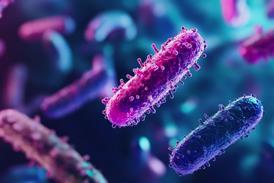Third in a four part series considering uses of medicinal cannabis
The medical use of cannabis describes the scenario where a healthcare professional, such as a doctor, prescribes or recommends the use of cannabis for treatment of a medical condition in a patient under their care. This scenario will mostly likely be a consequence of failures in current medications to treat specific symptoms or diseases, along with subjective views on the therapeutic benefits of cannabis.
Cannabis contains over 100 cannabinoids which are the naturally active constituents of the cannabis plant that bind to receptors throughout the body to produce broad range of effects. The mechanism of action of cannabinoids is not yet fully understood, and it is likely that these work by ‘mimicking’ the effects of the body’s own cannabinoids, or endocannabinoids.
Endocannabinoid receptors are located in the brain and throughout the central and peripheral nervous systems; they play pivotal roles in the body’s health and some disease processes. In recent years, there has been considerable interest in cannabis and cannabinoids for the treatment of human diseases, through modulation of the endocannabinoid system, and potentially other systems, though the mechanism of action is not fully understood. The majority of this research has not involved formal clinical trials in human subjects.

The cannabis plant is not authorised as a medicine, as formal clinical trials in human subjects have not been performed to determine the benefits and risks of its possible medical use. Cannabinoids derived from the cannabis plant or synthetic cannabinoids are authorised as medicines, and other cannabinoids are under scientific investigation for the treatment of a number of medical conditions.
The main cannabinoids studied, and thought to be the most important in terms of clinical effects, are tetrahydrocannabinol (THC) and cannabidiol (CBD). THC is the main psychotogenic component of cannabis. Cannabis products are often referred to by their composition of THC and CBD, or by the ratio of these components.
The following cannabinoid-containing medicinal products have been authorised for marketing:-
- Marinol and Syndros (active ingredient — dronabinol) (1): oral capsules or an oral solution containing synthetic THC. Dronabinol is indicated for (1) anorexia associated with weight loss in patients with acquired immune deficiency syndrome (AIDS) and (2) nausea and vomiting associated with cancer chemotherapy, usually after previous treatments have failed.
- Cesamet and Canemes (active ingredient — nabilone): oral capsules containing a synthetic cannabinoid similar to THC. The main indication for their use is nausea and vomiting associated with chemotherapy, usually after previous treatments have failed.
- Sativex (active ingredient — nabiximols): a medicinal product containing approximately equal quantities of THC and CBD from two cannabis extracts. This product, which is sprayed inside the cheek or under the tongue, has been authorised for the treatment of muscle spasticity resulting from multiple sclerosis.
- Epidiolex/Epidyolex (active ingredient — CBD): a plant-derived CBD oral solution indicated for the treatment of seizures associated with Lennox-Gastaut syndrome or Dravet syndrome in patients two years of age or older.
The routes of administration for cannabis are oral, sublingual, or topical; it can be smoked, inhaled, mixed with food, or made into tea. Cannabis can be taken in herbal form, extracted naturally from the plant, or manufactured synthetically. In the European Union, smoking cannabis preparations for medical use is prohibited due to the risks associated with it.
Spasticity associated with multiple sclerosis
The benefits and risks of nabiximols have been demonstrated in controlled clinical trials, and it is authorised as a medicine for patients with this condition that have failed other treatments. It is likely that the effectiveness will depend on the relative ratio of cannabinoids (THC to CBD).
Therefore, evidence for one formulation’s efficacy does not substantiate for other cannabis product. The scientific evidence and the benefits outweighing the risks support the use of cannabis in the treatment of spasticity associated with multiple sclerosis, where other treatments have failed.
Nausea and vomiting associated with chemotherapy
Nabilone is authorised as an adjunctive treatment for nausea and vomiting in patients undergoing chemotherapy who are not responding to other treatments. The scientific evidence support the effectiveness of cannabis in the treatment of nausea and vomiting associated with chemotherapy, where other treatments have failed.
Chronic pain
Chronic pain is considered a disease of the central nervous system, affecting one in five people. A number of authorised medicines are available to treat the different types of chronic pain, such as cancer pain, post-surgical or post-traumatic pain. There have been clinical trials of cannabis for treatment of chronic pain in patients with a wide range of causes including neuropathic pain, cancer pain and fibromyalgia.
The cannabis products trialled included authorised medicines, and smoked cannabis. The majority of clinical trials that have been conducted have been shown to be subject to a moderate risk of bias (where repeated errors in data collection have led to incorrect estimates).
Cannabis products were also associated with serious side effects, when compared to other pain medicines. Medical professional bodies have raised concern about the use of cannabis and cannabinoids in the management of chronic pain, in the absence of recognised benefit to risk data.
The use of cannabis in chronic pain requires controlled clinical trials investigating the effectiveness of cannabis-based medicines with authorised medicines.
Severe, refractory (treatment-resistant) epilepsies
The main cannabinoid with anticonvulsant properties is CBD. Epidiolex is a plant-derived CBD oral solution which has been authorised in the US for the treatment of seizures associated with Lennox-Gastaut syndrome or Dravet syndrome in patients 2 years of age or older.
This is the first FDA-approved drug that contains a purified drug substance derived from cannabis. It is also the first FDA approval of a drug for the treatment of patients with Dravet syndrome. Controlled clinical trials supported the efficacy of the drug.
In the EU, on 25 July, Epidyiolex received a positive opinion from the Committee for Medicinal Products for Human Use (CHMP) recommending the granting of a marketing authorisation. Following the CHMP opinion, the European Commission decision, a legally binding authorisation, is issued typically after 67 days.
Other medical conditions/medical indications
Data on the efficacy for other medical conditions, such as Parkinson’s disease, rheumatoid arthritis, Crohn’s Disease anxiety, depression and agitation associated with dementia is inadequate and of low quality.
Medical professional bodies highlight the importance of using a product that has been well-characterised, chemically, pharmacologically and toxicologically to prove cannabis treatment is effective. Such data forms the basis of a product authorisation for medicines granted by regulatory bodies.
To market a medicine, an application for a marketing authorisation to a regulatory authority is required. The application must include data which demonstrates the effectiveness, safety, and quality of the medicine. A development programme for a medicine will include a thorough characterisation of the quality of the medicine, nonclinical (animal) studies to characterise the toxicological effects, and clinical trials in hundreds or thousands of patients to determine its effectiveness and safety.
The development programme may take many years, and the company may obtain scientific advice from regulatory authorities to guide the development of the medicine. If the benefit-risk balance of a medicine is considered positive by the regulatory authority, that medicine will receive a marketing authorisation.
The next article in this series highlights the regulatory background — read it here.
Reproduced with the kind permission of Woodley BioReg — the views expressed in this article are those of the authors and do not represent those of Regulatory Rapporteur or TOPRA.


























No comments yet